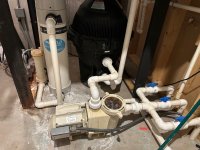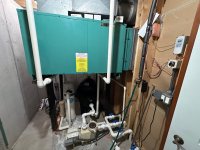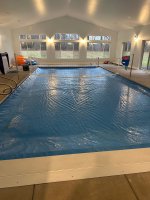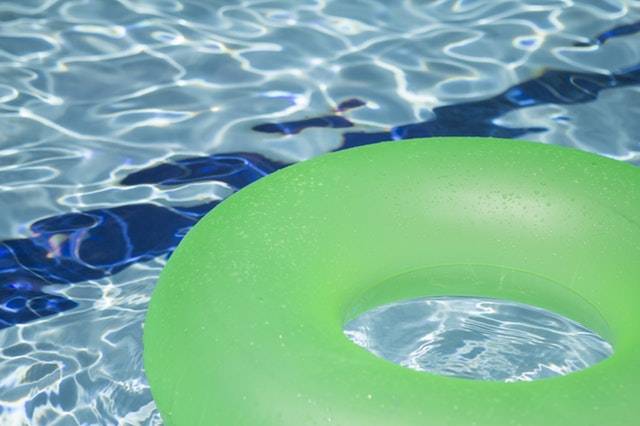- Nov 13, 2023
- 90
- Pool Size
- 17000
- Surface
- Vinyl
- Chlorine
- Salt Water Generator
- SWG Type
- CircuPool Core-55
I’m still waiting for my test kit to arrive (seems delayed from the post office due to upcoming Thanksgiving holiday maybe?).
In the meantime, I’ve been adding 1 gallon of 7% liquid chlorine bleach every 2 days or so. And I added 32oz of AquaDoc’s phosphate remover while no one was going to be around since my phosphates were over 4000.
I stopped by the pool store today to test the water (just to see any changes while I wait for my Test Kit to arrive and then SLAM my pool).
I haven’t added anymore chlorine tabs or any other chemicals other than the bleach and the phosphate remover per the advice of this group.
Results today (number in parentheses was prior value on 11/13):
Free chlorine: 0.5 (0.6)
Total chlorine: 8.7 (6.6)
pH: 7.6 (7.5)
Total alkalinity: 118 (133)
Calcium hardness: 115 (93)
CYA: 49 (45)
Optimizer: 11 (11)
Phosphate: 3214 (4000+)
TDS: 1500 (1600)
So the combined chlorine is ever worse now. Am I reading the Pool Math app correctly — it says to SLAM my pool my FC target is 19. So for my 17k gallon pool with a CYA of 49, I need to add 4.2 gallons of 7.15% chlorine liquid bleach.
Thanks for all the help!
In the meantime, I’ve been adding 1 gallon of 7% liquid chlorine bleach every 2 days or so. And I added 32oz of AquaDoc’s phosphate remover while no one was going to be around since my phosphates were over 4000.
I stopped by the pool store today to test the water (just to see any changes while I wait for my Test Kit to arrive and then SLAM my pool).
I haven’t added anymore chlorine tabs or any other chemicals other than the bleach and the phosphate remover per the advice of this group.
Results today (number in parentheses was prior value on 11/13):
Free chlorine: 0.5 (0.6)
Total chlorine: 8.7 (6.6)
pH: 7.6 (7.5)
Total alkalinity: 118 (133)
Calcium hardness: 115 (93)
CYA: 49 (45)
Optimizer: 11 (11)
Phosphate: 3214 (4000+)
TDS: 1500 (1600)
So the combined chlorine is ever worse now. Am I reading the Pool Math app correctly — it says to SLAM my pool my FC target is 19. So for my 17k gallon pool with a CYA of 49, I need to add 4.2 gallons of 7.15% chlorine liquid bleach.
Thanks for all the help!















